
Via Veloce by Wille R. www.veloce.se since November 1995 and still here.
Alfa Romeo Duetto 1966 - 1969 FAQ
--The chassis and body
In Italian the original round-tail shape is universally known as 'osso di seppia' or cuttlefish, for obvious reasons. While it was quite controversial at the time, viewed as contrived and fussy in its details, the 'coda lunga' (long-tail or round-tail) shape is ironically the most favoured body style today.
The low, artfully sculpted body incorporated a degree of curvature below the waistline that was still quite startling in 1966. The overall profile was typically Pininfarina, seemingly shaped by the wind and extremely smooth and harmonious in profile. Much was done to keep the shape as clean as possible. The front end itself was very low-set with a plunging bonnet line that contributed to negative lift. Integrating the bumpers and Alfa grille into the low front end, using Perspex cowls to cover the headlamp cutaways and designing a soft-top that could fold almost completely out of sight also helped.
As a result the Duetto boasted extremely good aerodynamics for its day, confirmed by Pininfarina's extensive use of wind tunnel testing at the Turin Polytechnic. The Duetto was a good example of Alfa Romeo's emphasis on aerodynamics, born in the 1950s with the Bertone-styled Berlina Aerodinamica Tecnica (BAT) series of prototypes.

Perhaps the most controversial aspect of the Duetto's body design was the scallop along each body side, running from the top of the front wheel arch almost to the very end of the body. Again this played an aerodynamic, as well as an aesthetic, role. Pininfarina claimed that directional stability in side winds was enhanced because air was drawn more effectively over the car. Alfa Romeo claimed that the scallops helped "to eliminate any suggestion of bulkiness." They may also have had a structural role in increasing the rigidity of the flanks. The shape of the side scallops was echoed subtly in the shape of the rear bumper.
Pininfarina actually built the bodies at its Grugliasco plant in the suburbs of Turin. The completed metalwork would then be transported by road to Milan, to the then-new factory at Arese where the Alfa Romeo 105 series mechanicals were installed and trim put in. The body shell was welded to the floor pan and reinforced with box-section beams running longitudinally and across the car.
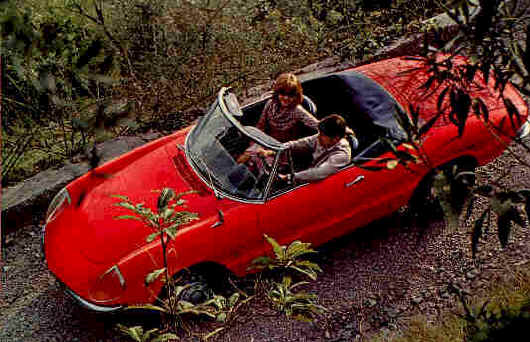
At 2250 mm (88.6 inches), the wheelbase was identical to the old 101 series Spider, but it was 260mm (over 10 inches) shorter than the Giulia saloon, and 100mm (3.9 inches) shorter than the Giulia Sprint. Compared to the Giulietta Spider, the Duetto measured a substantial 4250mm (167.3 inches) long - an increase of 350mm (almost 14 inches). This was entirely due to the longer front, and especially rear, overhangs. The round-tail Duetto had a 1065mm (41.9 inch) overhang from the rear wheel centres to the tip of the overrides - the longest of any member of the Spider family covered in this book - and the front overhang of 935mm (36.8 inches) was also substantial.
The bonnet hinged at its forward edge to allow fairly generous access to the engine bay, which was illuminated by an under-bonnet lamp as standard - this was activated automatically when the bonnet was raised and the external lights were on. The lever to open the bonnet was sited under the dashboard, in the left-hand foot well. The exhaust tailpipe stuck out rather conspicuously at the back, curving under the rear bodywork and emerging just to the left of centre looking from behind. The doors incorporated anti-burst mechanisms but not child locks. The extra-thick laminated safety glass windscreen was more upright than later Spiders and incorporated a high degree of wraparound.
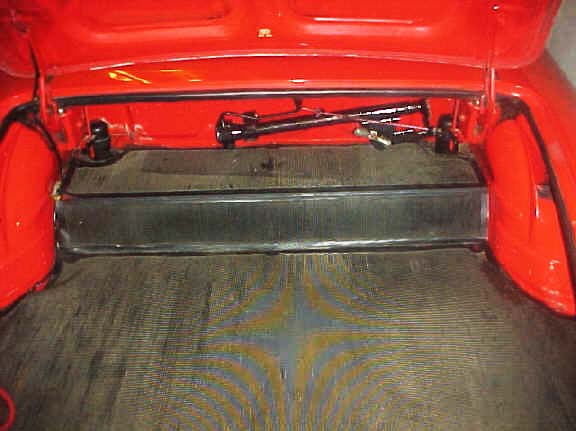
The very large rounded boot lid was operated via a lever mounted in the left-hand side doorjamb that could also be locked using the door key for added security. The lid was hinged at the forward edge to allow access to a surprisingly capacious boot. It may have been shallow (the low, plunging tail line saw to that) but it could fit a reasonable volume of baggage, especially if it was of the squashy variety. No official figure for boot size was ever published, but Autocar magazine managed to squeeze in a modest 4.4 cubic feet (128 litres) of its standard-size boxes in its test. A good estimate of its overall useable volume was between around 7.5 cubic feet (210 litres) and 7.9 cubic feet (230 litres), since the boot's maximum height was 300mm, maximum width 1300mm and maximum length 820mm.
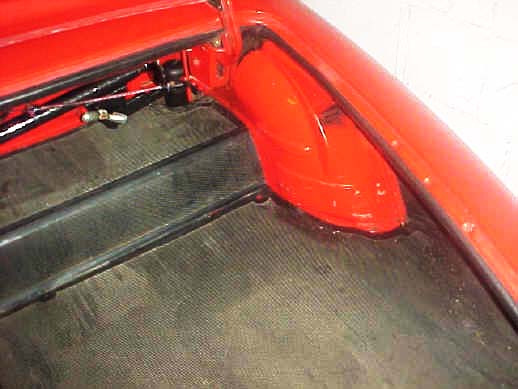
As for trim, the boot was left in simple painted metal with hardwearing black carpeting on the floor. The wheel jack was clipped on to the rear bulkhead inside the boot and a full tool kit was supplied in its own bag on the left-hand side of the boot: this comprised a wheel brace, pliers, box spanner for the spark plugs, T-bar for the plug spanner, a Phillips screwdriver and an ordinary screwdriver.
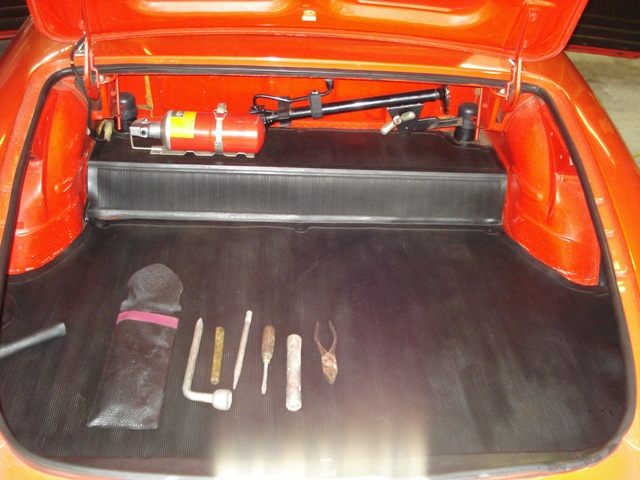
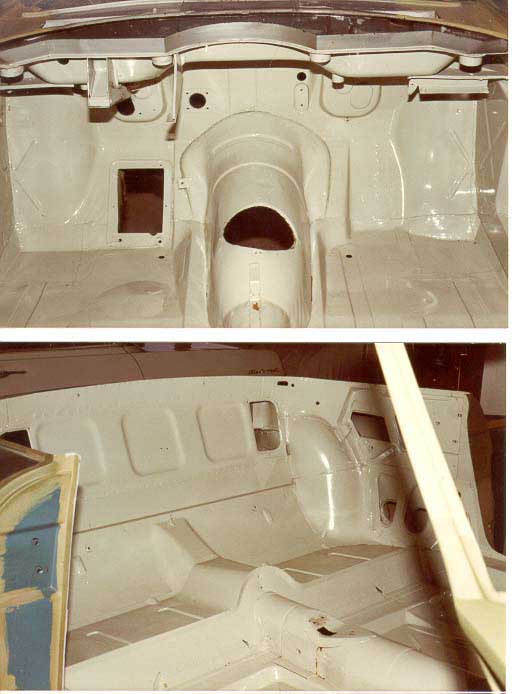
The spare wheel was under the boot floor in its own well, accessed by lifting the boot mat. On the opposite side sat the 46-litre (10.1-gallon) fuel tank, with a 'reserve' of 7 litres (1½ gallons) - presumably meaning that the warning light was meant to come on with that amount remaining. Two jacking points were provided on each side of the car under the sills.
The body was a pice of art even from under.
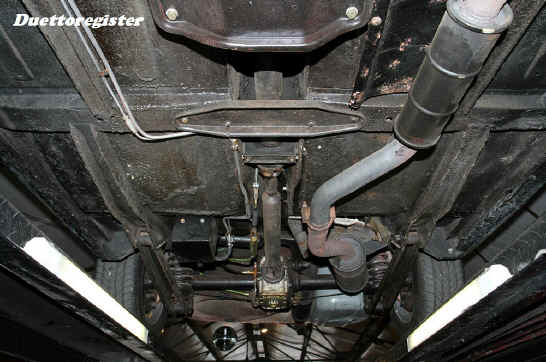
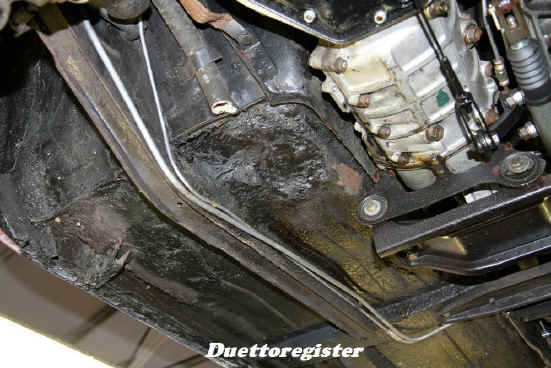
If you have any comments, please send an E-mail
#